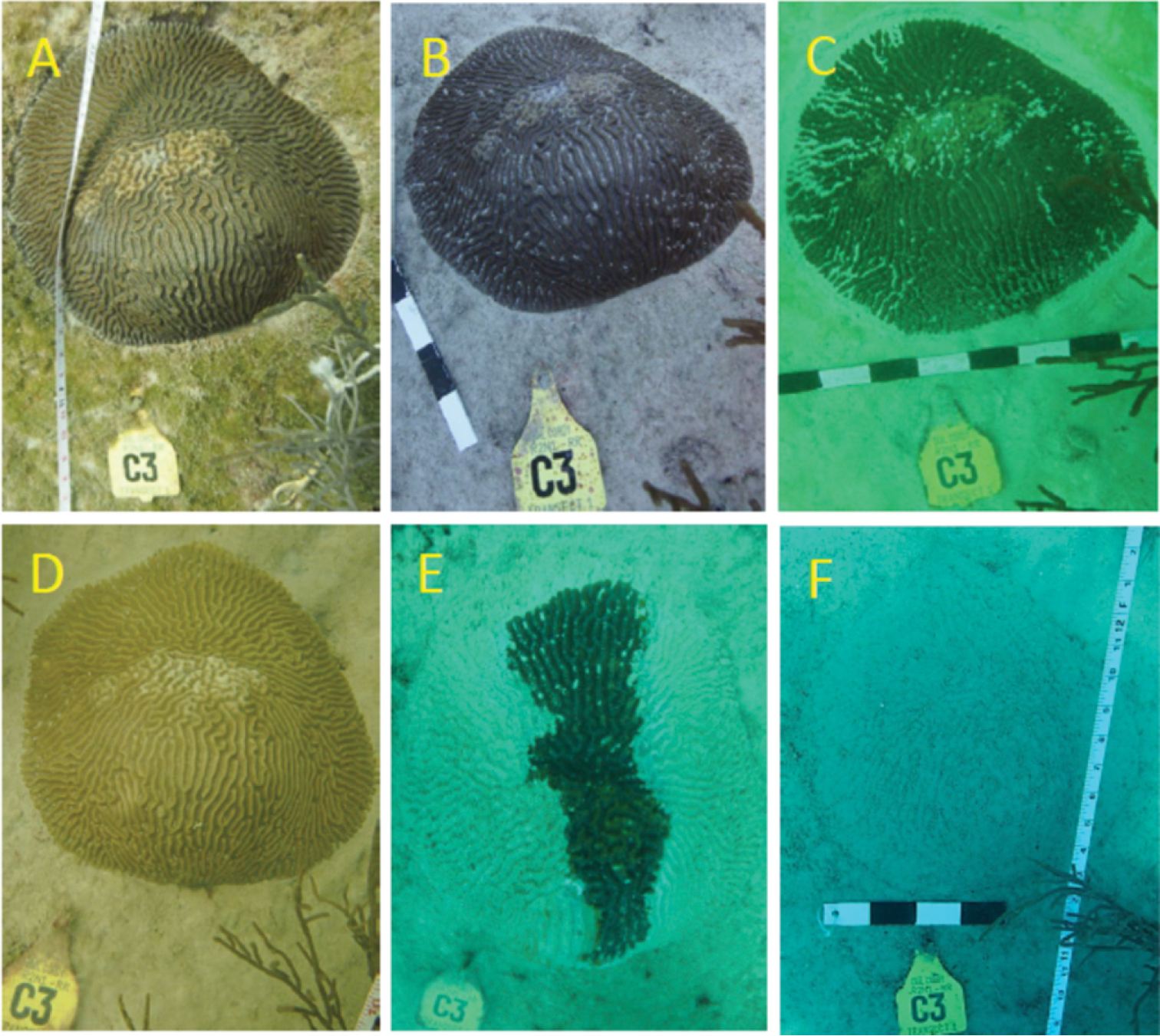
|
||
|
Temporal photographic montage of Pseudodiploria strigosa colony (Tagged colony R2N1-RR-T1-C3). This is the same channel-side coral as depicted in Figure 2 above. A Photograph of coral during initial baseline surveys on October 21, 2013 B coral during baseline week 4 on November 18, 2013 just days prior to initiation of dredge activities. Note the green covering of turf algae visible in previous photo is now covered in fine-grained sediment as a result of the passage of the first winter storm of the season C coral during compliance week 30 on June 14, 2014 showing sediment stress and partial burial from dredging activities with a berm of sediment around base of colony. This photo represents the week of maximum sediment stress to corals at this site during the peak of dredging operations D coral showing signs of bleaching (paling) associated with warm-water thermal anomaly during compliance week 45 on September 28, 2014, note no apparent lesions or mortality related to earlier sediment stress event E colony showing >60% mortality associated with progression of white-plague-like disease during compliance week 69, March 18, 2015; and F total colony mortality, note the coral is covered by fine-grained sediment, photo taken on May 19, 2015 following completion of dredging activities. This photo was taken on the same day as Figure 2 above. Note that the dead colony can no longer actively shed sediment. These photographs are accessible via a public access data base provided by the FDEP. |